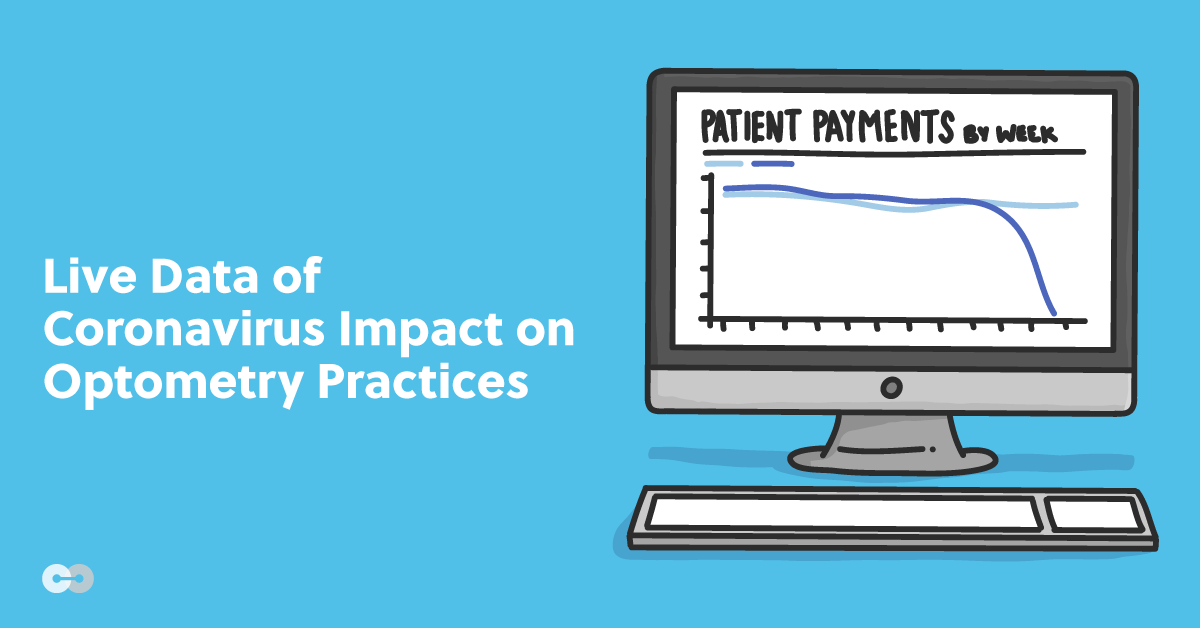This collection of graphs charts anonymous data from 2,800 practices across all 50 states, showing how COVID-19 has affected their practices. We’re providing them to all ODs to give a clear picture of the state of the industry in this key moment.
This data is updated monthly. The graphs show weekly reports on how practices across the US are seeing their patient flows and revenues impacted by the Coronavirus pandemic.
We suggest that readers pay close attention to the relative changes and trends in order to understand how optometry practices are being affected by the Coronavirus.
Last updated on 11/19/20. Bookmark this page to see new insights every month. Data for the current week is typically incomplete.
New patient bookings continued their upward trend through the summer. August's numbers showed a huge change from the record lows of April, when practices were experiencing a 91% decrease in total exam volume comparing 2019-2020.
As social distancing and policies guiding business reopening have taken effect, the exam numbers have begun to flatten. Interestingly, the patient exams over the holiday weekends of Independence Day and Labor Day were higher than last year's, likely due to practices focusing on making up April's lost revenue. Still, overall patient exams are lower and likely to remain so as practices continue to follow social distancing safety measures that call for lower patient volume.
We will continue to provide updates over the next few weeks. Expect significant changes on a weekly basis due to the ongoing updates in both policy, behavior, and the speed at which new information is collected and disseminated to the public.
As you see from the graph, contact lens purchases continue their trend upwards back towards the level of purchases last year. Expect to see a return to baseline even before patient volume returns to its baseline levels.
Frames and lenses sold are recovering at a faster rate than patient bookings. It would be interesting to dive into more detail here and analyze a few different factors within the data:
- Are patients purchasing more second pair frames and lenses now, on average, than normal?
- Are more patients making in-store purchases on an exam day compared to normal?
- What is the consumer sentiment around making purchases in store vs online for eyecare products? Has this sentiment changed due to the new normal?
We're curious to see how these trends play out over time and will be following the data closely.
In this moment, it’s crucial to understand not just the scenario facing your practice, but the industry as a whole. Right now, we’re in a period of dramatic and near-constant shift, and many practice owners are focusing on what they can do to make sure their doors can re-open when the pandemic has subsided. These graphs reflect that: we can see that optometry practices are responding to the call to offer only urgent or emergent care.
It is important to continue following both national and local trends as they can help guide you in your practice decisions when you begin to reopen. We will keep tracking these trends and update you on any micro and macro changes that we find.
CovalentCareers is committed to supporting optometrists and optometry students during the Coronavirus pandemic. For more optometry-specific resources and information, visit our Optometry COVID-19 Resource Center.
